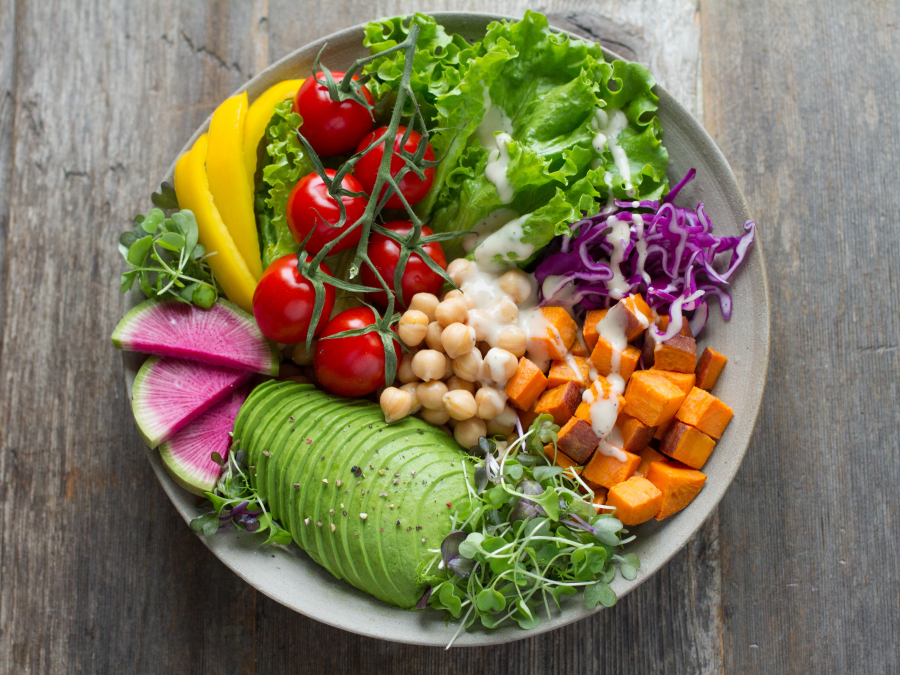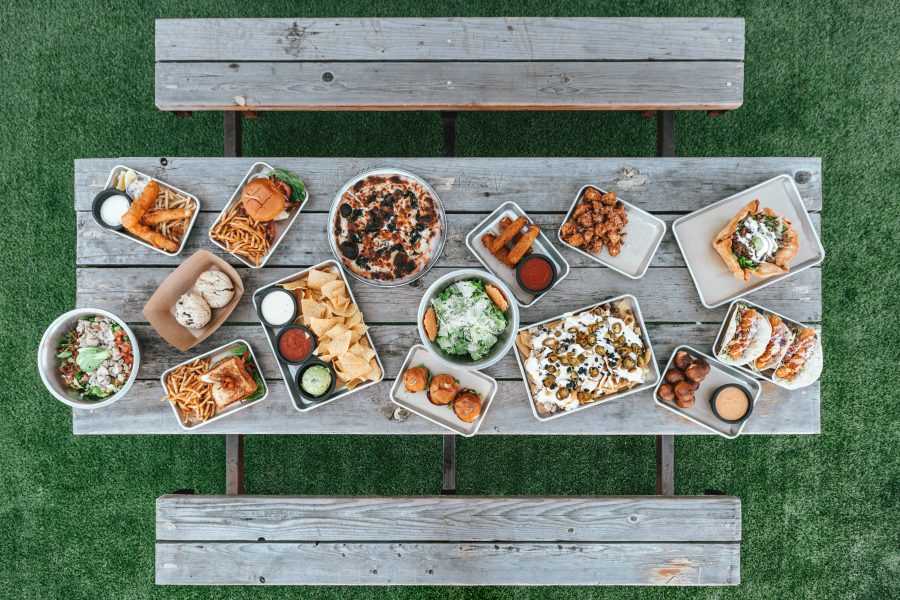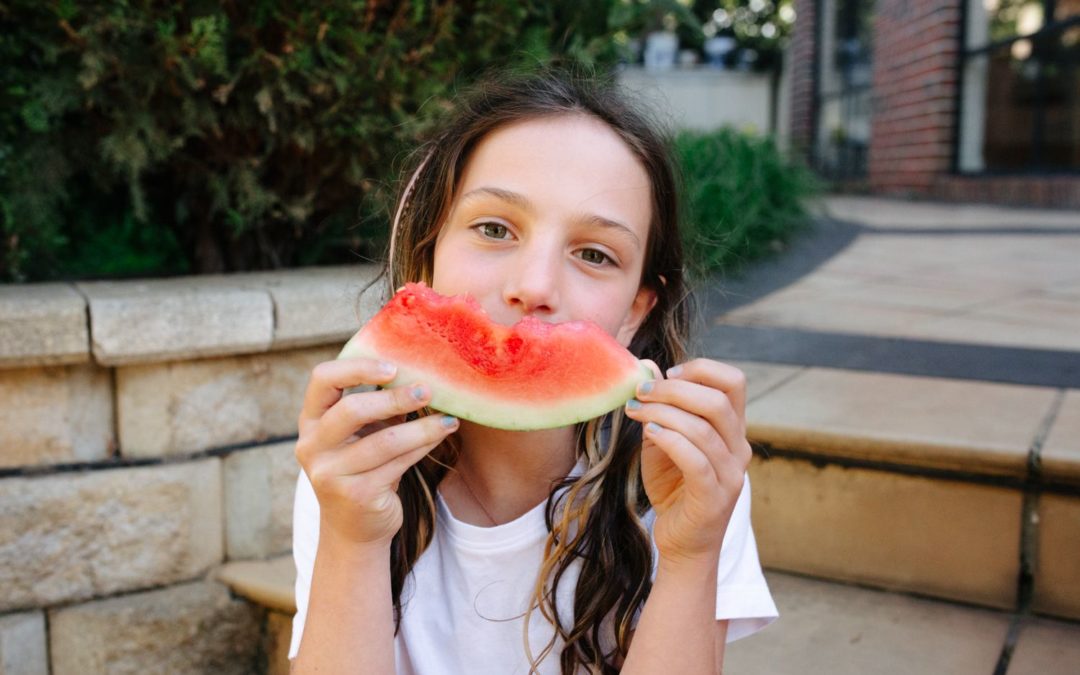In the past few years, many common foods including leafy greens, oils, nuts and seeds, yoghurt and flour varieties have gone from being called, well, just ‘food,’ to being considered a ‘superfood.’ The change of language made many people understandably confused about why all of a sudden, regular food now needs to be called something different. Are these foods doing something to our bodies which they weren’t before they were being called ‘superfood? Was the term simply created to market these foods more and amp up their price? Let’s share a few threads of knowledge and de-bust the superfood vs superfraud headache.
Are ‘superfoods’ just regular foods with a new name?
Absolutely! To put it simply, the health benefits in these foods are not far superior to other healthy foods. As we are learning more about the positive benefits of foods all-together such as how what we eat can promote good heart health, cholesterol management and digestive health, marketing companies have come up with a new name for these regular foods – superfoods! The important point to note is, you don’t suddenly need to be stocking your grocery trolley with everything from the expensive health food aisle called a superfood, you can fill your pantry with more affordable options which are still extremely healthy, tasty and versatile!
Should I eat ‘superfoods’?
Well that is really up to you (and there should be no ‘shoulds’ in eating). If you enjoy them and you can afford them, go for it! Just know that they often don’t quite live up to the marketing hype. Recently on @foost.com.au social media we did some Nutrition head to head’s on some common ‘superfoods’ and here is what we found, this might help you to make more informed choices (although you will see below how multifaceted food and nutrition is):

Both are green, both leafy, so what’s the difference? Let’s bring kale and spinach to the podium!
Kale is a cruciferous vegetable (in the same plant family as cauliflower, bok choy and broccoli) while spinach is a flowering plant whose leaves are edible.
Kale, perhaps the superfood that began all superfoods, has a distinct texture and slightly bitter flavour while spinach has a milder flavour. Kale is known for its ‘superfood’ status, but you may be shocked to find that spinach is highly similar nutritionally!
Both kale and spinach are full of vitamins and minerals as well as antioxidants which are important for protecting from cell damage. Some of the nutrients they both provide are iron, potassium, calcium and vitamins A, C and K. Kale contains a higher amount of vitamin C, while spinach has a higher amount of vitamins A and K. Overall spinach provides more nutritionally than kale, however, both can be considered nutrition superstars!
You can get spinach and fresh or frozen while kale is only available fresh in local stores like Coles and Woolworths. If you are looking for easy and value, frozen spinach is cheaper than fresh spinach and fresh kale and may be the more convenient option for cooking with a longer shelf life.
So, what’s the verdict? If you like kale, enjoy it as much as you like, but it is not a must-have for nutrition. Including a variety of vegetables and leafy greens will do just as well. Spinach and kale both go great in a salad, added into an omelette, or added into a smoothie for an extra hit of veg!
Cooking hack: Some people do not like the tougher texture of kale, but did you know massaging it (weird, I know) in oil or avocado softens it significantly.

Feeling Blue-berry? Let’s talk about blueberries and goji berries. Blueberries have been consumed for hundreds of years, with popularity amongst cultures including the Native North American Indians. Originating from Asia, goji berries (also called wolfberry) are red little gems, often sold in stores in their dried form and were one of the first ever “super foods” but how super are they really?
Take a guess as to which is higher in antioxidants? If you said the humble blueberry you would be correct!
Both are a good source of vitamin c (needed for tissue growth and repair), although the amount of vitamin c decreases in dried goji berries. Blueberries are also rich in vitamin k (needed for healing) and fibre (keeps our bowels healthy).
Antioxidants (which protects our bodies from harm) are found in both blueberries and goji berries, however the amount is slighter higher in blueberries. One antioxidant in particular called anthocyanin, is what gives blueberries their beautiful purple-blue colour. This antioxidant is also involved in memory, let’s see who remembers that fun fact?
Both berries are delicious and can add a pop of colour to cereal, muffins, smoothies, baked goods as well as add a sweet tarty flavour to salads.
Goji berries and fresh blueberries are often not cheap (except for that lovely couple months of the year blueberries are in season) so opt for some frozen blueberries or any berry you like for a cheaper hit of antioxidants and other nutrients.

From barley to buckwheat there are so many grains out there and today we’re discussing rice and the ancient grain, quinoa.
Rice is a main staple in many houses worldwide and is very diverse in flavour depending on the type used, of which there are thousands! Nutrients found in rice differ depending on type. Brown rice has a nuttier flavour and is higher in fibre. Basmati or dongara rice keeps us fuller for longer, as the energy is more slowly released for our body to use.
Quinoa is an edible seed that originates from South America. When cooked, the seed is fluffy and crunchy, and has a mild nut flavour. White quinoa is more milk in flavour, it also comes in red and black.
Overall, Quinoa is mostly more nutrient dense than rice, with higher concentrations of calcium (bone health), iron, potassium, magnesium and other nutrients. Quinoa is also two times higher in protein, however rice contains nearly two times the fibre.
Both rice and quinoa are gluten free!
Although there are countless benefits to quinoa, its growth sustainability has been called into question. Despite the rapid increase in interest in quinoa leading to a large increase in income for quinoa farmers in Bolivia and therefore their living conditions, food variety and education, there has also been a noticeable degradation in soil quality which threatens the sustainability of their crops.
When looking at cost, rice comes out on top with as little as $0.20 per 100g, while quinoa costs approximately $1.65 per 100g.
Both products are cooked the same and can be eaten in a range of meals, including curries, soups, in sushi and in salads.
So our advise? This is a tough one to pick! Variety is the spice of life! Enojoy both if you can. If cost is an issue, then stick to rice, but ideally look for brown and/or basmati. If you want to enjoy quinoa, then think about taking a look at where it is being grown. If you just can’t choose, these days you can also often find quinoa and rice mixes on supermarket shevles.

Have you noticed more seeds on the market these days? Let’s take a look at hemp and chia seeds.
Hemp seeds or hemp hearts (hemp seeds with their shell) come from the hemp plant. It has been an Asian staple for years whilst chia seeds come from Central and South America. Both seeds are nutritious, incredibly versatile cooking ingredients with similar health benefits. Both hemp and chia seeds are sources of omega 3 fatty acids (fats that are good for heart health and brain function). Both seeds are also rich in fibre, keeping us feel full and energised for longer.
Chia and water forms a gel that can be used to make an egg substitute in cake, muffin recipes as well as be used to make healthier home made jams.
Hemp seeds are slightly higher in protein. Three tablespoons of hemp seeds have a similar to the protein content of two eggs, making it another option for vegetarians.
Chia seeds are a lighter on the hip pocket at around half the cost.
Seeds (hemp, chia or any others) are mild in taste and great addition to any diet and perfect when searching for a nut alternative. At foost we love variety so keep a few different seeds in the cupboard and use a mixture or use different ones in different dishes. They go great sprinkled onto your porridge or salads, into baked goods, as well as in yoghurt and smoothies!

Many people see cocoa as cacao’s less impressive counterpart but is that true? What’s the difference? Both come from the beans of the cacao plant, which are picked, dried and ground into powder that you see on the shelves of your local supermarket.
The main difference between the two are how the beans are processed. Both are processed with heat to separate the cacao butter and the bean and then crushed to create the powder. Cacao powder is processed using a lower heat. The higher heat used in cocoa processing, lowers some of the nutrition available but also reduces it’s bitterness. Both cacao and cocoa contain magnesium and potassium, great for heart health (but remember the amount we use of these powders is small).
The other difference between the cacao and cocoa is cost. Cacao powder can be double the price of cocoa. If using cocoa powder, it is important to buy products that are 100% cocoa as some products will add in sugar and other ingredients to modify the flavour (so flip that pack over and take a look at the ingredients list).
Personally I usually use cocoa. But whichever you prefer why not add some cacao or cocoa to a smoothie, muffins or try blending it with frozen banana for a chocolate ice cream twist?
Everyday ‘normal’ foods which are awesome for your health! (and pocket friendly)
It is definitely not necessary to spend a lot of money to reap the nutritional benefits of food. Here is our list of AWESOME, EVERYDAY foods that are affordable and readily available:
1. Fruits and veggies
Buying fruits and vegetables in season is one of the best tools you can have on your belt. As they’re in abundance, they’ll be cheaper, fresher and be grown within Australia. Fruits and veggies are rich in important vitamins and minerals which keep our brain, heart and bowels happy and healthy. They help fight infection, help strengthen immune system, boosts concentration and energy (amongst MANY other super powers). The more colourful the better! Capsicum, cucumber, carrots, bananas, oranges – try picking up a new fruit or vegetable this week!
2. Oats, brown rice and seeded breads
We love oats because you can make so many different recipes with them! Porridge, oat biscuits or a tasty apple crumble. Alongside oats, brown rice and wholegrain breads (where you can see all the little grains and seeds) are a great source of fibre and help with bowel health. They also keep your energy levels up so you can concentrate for longer.
3. Legumes
Think chickpeas, lentils, red kidney beans, peas or black beans. Canned or dried! These legumes may be little but they do a LOT when they get into our systems. They contain high levels of fibre, folate, iron, potassium, are a great source of prebiotics and phosphorus which are great for heart and bowel health, mental health, energy levels and are a great source of non-meat protein.
4. Eggs
Eggs are another extremely versatile food! Eat them scrambled, boiled or fried, make them into a quiche, even toss them in a salad! They keep well in the fridge and because of their small size, they’re a great snack for lunchboxes. Eggs are packed with vitamins and minerals, protein and omega-3 fats which are great for heart health.
5. Nuts and seeds
Bursting with iron and heart happy fats just like eggs! Great in snacks and salads, these delicious little additions give you bounce in your step (energy) and are a great option as a snack, keeping you satisfied between meals!
6. Fish
Fish contain omega-3 and omega-6 fats which are beneficial for a healthy heart and brain function. For a bit of variety, a tasty meal which includes fish may be enjoyed by your family 2-3 times and week! We love making fish patties, baking fish in the oven, a fish stew in the winter months or crumbed fish pieces served with veggies – super right!
All of these foods above have been available in supermarkets and farmers markets for years and we we think they’re all pretty super! Is it worth spending extra money on ‘superfoods’ which often contain the same nutritional benefits as these great foods? That’s your choice to make!
We think – keep it simple, and enjoy everyday foods in season, mixing it up throughout the week for some added variety.










